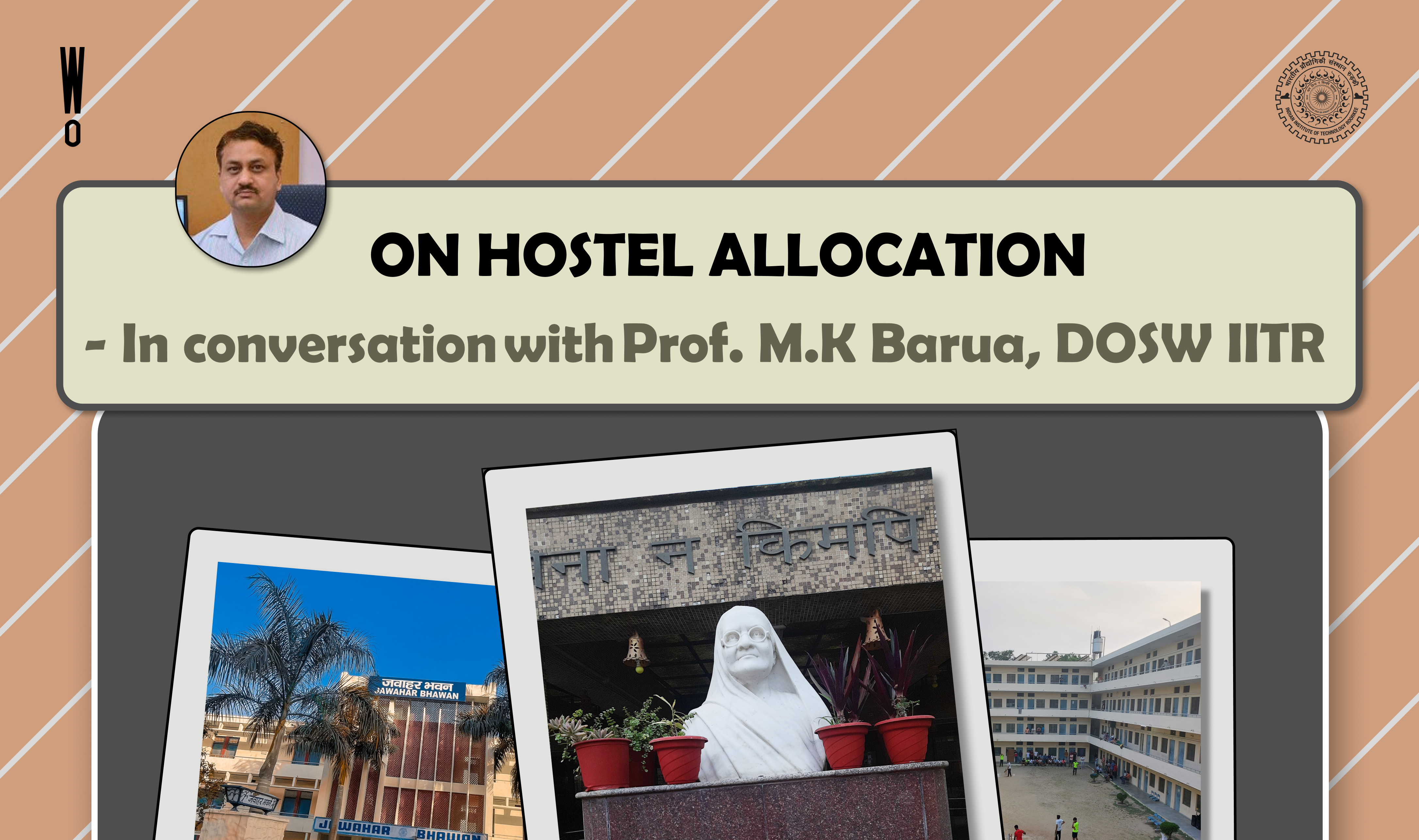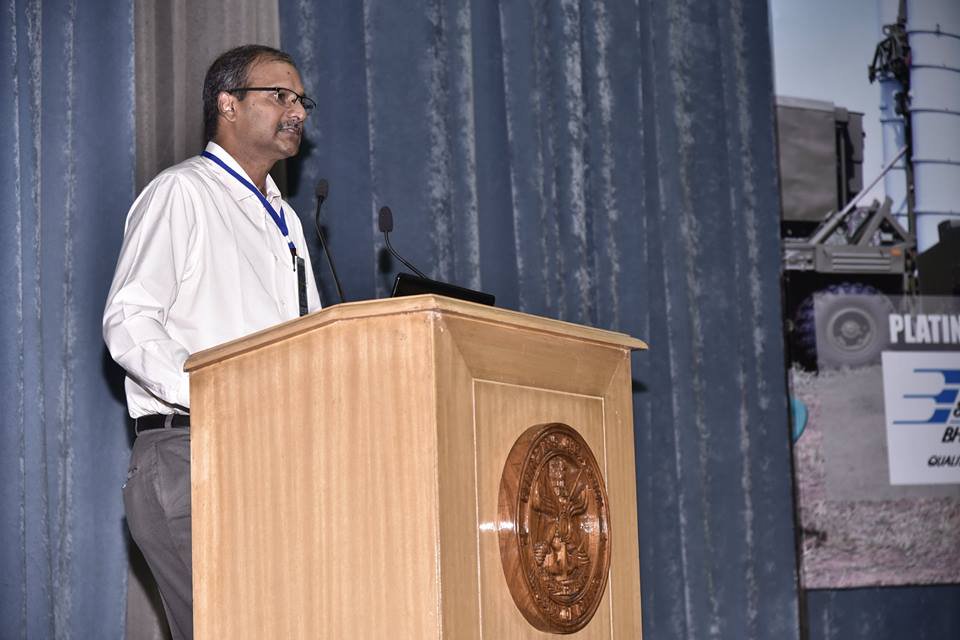

Body of IITR

Mr. U Rajababu is an accomplished scientist and engineer who currently leads India’s Ballistic Defense Program. In recent news, he led a group of over 150 scientists and engineers to design and conduct India’s first Anti-Satellite Test (ASAT), more popularly known around the country as MISSION SHAKTI. He delivered an Institute Lecture on 23rd October 2019 on the technological challenges faced by his team, and how they eventually succeeded with MISSION SHAKTI. As part of our larger goal to cover the Institute Lectures, Watch Out! decided to interview Mr. Rajababu to talk to him about his career in Defense Research and Development Laboratory (DRDL), MISSION SHAKTI, and more.
WO : Could you tell us more about your undergraduate and postgraduate field of study?
Mr. U Rajababu : I graduated from Andhra University with an undergraduate degree in Mechanical Engineering. Soon after, I joined the Air Force where all the engineer-selects mandatorily study the field of Aeronautical Engineering from the Air Force Technical College. Subsequently I joined the Field Formations, where I started working on helicopters. I initially participated in the Siachen glacier operations after which I got posted to Hyderabad where I was in charge of the maintenance of about 30 helicopters. I then worked with DRDL on the Prithvi project (specific to the Air Force). I then started working on Missile Integration, and after about 20 years (since I initially joined the Air Force), I shifted from the Air Force cadre of DRDL to the Scientist cadre.
WO : How was undergraduate life for you?
Mr. U Rajababu : It was pretty good. I never really expected to work on such diversified fields. I guess you can say that my career took its own direction as per the requirement of the Service.
WO : At what point did you realise you wanted to utilise your knowledge for the protection and betterment of the nation, as opposed to, say, personal gains?
Mr. U Rajababu : I was basically intrigued by the field of aeronautics and since I was a child I was fascinated by the Air Force. I also got selected for the Air Force during my pre-final year of undergraduate studies, so it made sense for me to go that way. Once I joined the Air Force, the requirements of the service eventually made me specialise in certain fields. As an Aeronautical Engineer with a specialization in Mechanical Systems, I eventually had to learn a lot more about aerodynamics, propulsion, weaponry, ballistics etc and eventually, over time, I worked on Missile Integration.
WO : You’re the head of India’s Ballistic Defense Program which functions under DRDO. Could you tell us more about the history of this program, its current objectives etc?
Mr. U Rajababu : Geographically speaking, we have two main adversaries, one in the West and one in the North-East. Both these adversaries possess long range ballistic missiles. In fact, across the world, over 30-40 countries possess ballistic missiles with ranges that exceed thousands of kilometers. With the ever looming threat of a surge in global tensions, it became imperative in the late 1990s to setup a Ballistic Defense program so that India could protect its vital assets. When this program started, it came with its set of challenges because it was a relatively new field and till date, very few countries can boast of expertise in this field. Also, since this program in any country is a matter of national security, it was not like no other technological setup because we had to start everything from scratch. It is obvious why no country would share the details of its ballistic defense program with us. To top it all, the threat is always evolving, and the ballistic capabilities of our adversaries only seem to grow. However, at this point, I can safely say that we’re in a good place to defend ourselves against both our adversaries. The current objectives of the program are pretty clear; we must continue to grow with evolving threats in order to always be capable of defending our vital areas.
WO : Mission Shakti was a grand success, and the degree of accuracy achieved is pretty stunning. Could you give us a brief overview of the testing that took place on March 27?
Mr. U Rajababu : Basically, Mission Shakti was an extension of my program. Since we were already working on anti-missile technology, we could easily adapt to the challenge of anti-satellite technology. Of course, here one of the main technical problems is the problem of extremely high velocities. There were more challenges though, like safety, security, collateral damage and secrecy. We couldn’t afford to have any failures, since it would lead to national embarrassment. In a single statement, one could say the Mission Shakti was a successful statement of deterrence.
WO : You mentioned in a few interviews that only a handful of scientists were aware of the actual goal of the project. Could you elaborate more on the importance of ‘deception’ in science when it comes to national security?
Mr. U Rajababu : Oh, it’s pretty important. When it comes to designing and running these tests that better our defenses and act as deterrents, it becomes imperative to work on a strictly need-to-know basis. The problem is, if the news of such a test leaked out before we could run it, the international pressure on India to not run such a test would be massive. We would have had to shut down the entire project if that happened. Hence we had to deal in deception. And especially with scientists, it is never easy. These are people who are inquisitive and curious, and when the simulations we were running pointed towards the true goal of our mission, we had to come up with a series of tactful alibis so that news wouldn’t leak. It was a tough job, but we were successful in the end.
WO : How important is it to keep space debris in mind?
Mr. U Rajababu : We wanted to keep the damage caused by the debris created to an absolute minimum to avoid any global hue and cry. Satellites usually occupy orbits in the range of 400 and 800 kms and if we chose to implode a satellite of ours within this range, then the debris created would have caused damage to satellites of other countries. In the past, China faced similar problems of international pressure with their anti-satellites tests. We wanted to avoid that, so we purposely chose a lower orbit, well outside the range of any satellite. With increased velocity, this debris would have quickly decayed and fallen on earth. The satellite we used was launched by us on January 24 of this year under the pretext of an experimental DRDO satellite.
WO : As someone who has been working in the intersection of science and national security, do you have any advice for undergraduates of IITR who dream of achieving the same?
Mr. U Rajababu : It’s a very interesting area to work in. It’s one of the best applications of advanced technologies, and of course, you get to work on matters of national security. Over the last few years the government has also been encouraging students to pursue science and research to groom them for similar reasons. It is an ever-evolving field with still a lot for us left to do, and I’m sure there are plenty of opportunities for anyone interested in working along these lines.